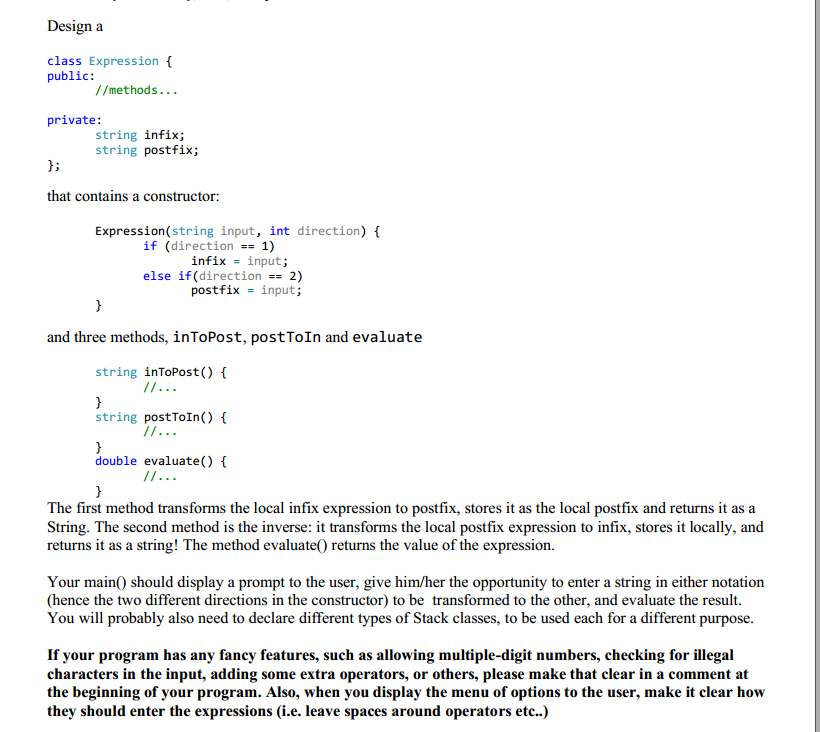 or java
or java
InC++ Design a class Expression { public: //methods... private: string infix; string postfix; that contains a constructor: Expression(string input, int direction) { if (direction == 1) infix = input; else if(direction == 2) postfix = input; and three methods, inToPost, postToIn and evaluate string inToPost() { //... string postToIn() { //... double evaluate() { The first method transforms the local infix expression to postfix, stores it as the local postfix and returns it as a String. The second method is the inverse: it transforms the local postfix expression to infix, stores it locally, and returns it as a string! The method evaluate() returns the value of the expression. Your main() should display a prompt to the user, give him/her the opportunity to enter a string in either notation (hence the two different directions in the constructor) to be transformed to the other, and evaluate the result. You will probably also need to declare different types of Stack classes, to be used each for a different purpose. If your program has any fancy features, such as allowing multiple-digit numbers, checking for illegal characters in the input, adding some extra operators, or others, please make that clear in a comment at the beginning of your program. Also, when you display the menu of options to the user, make it clear how they should enter the expressions (i.e. leave spaces around operators etc..) InC++ Design a class Expression { public: //methods... private: string infix; string postfix; that contains a constructor: Expression(string input, int direction) { if (direction == 1) infix = input; else if(direction == 2) postfix = input; and three methods, inToPost, postToIn and evaluate string inToPost() { //... string postToIn() { //... double evaluate() { The first method transforms the local infix expression to postfix, stores it as the local postfix and returns it as a String. The second method is the inverse: it transforms the local postfix expression to infix, stores it locally, and returns it as a string! The method evaluate() returns the value of the expression. Your main() should display a prompt to the user, give him/her the opportunity to enter a string in either notation (hence the two different directions in the constructor) to be transformed to the other, and evaluate the result. You will probably also need to declare different types of Stack classes, to be used each for a different purpose. If your program has any fancy features, such as allowing multiple-digit numbers, checking for illegal characters in the input, adding some extra operators, or others, please make that clear in a comment at the beginning of your program. Also, when you display the menu of options to the user, make it clear how they should enter the expressions (i.e. leave spaces around operators etc..)
 or java
or java






